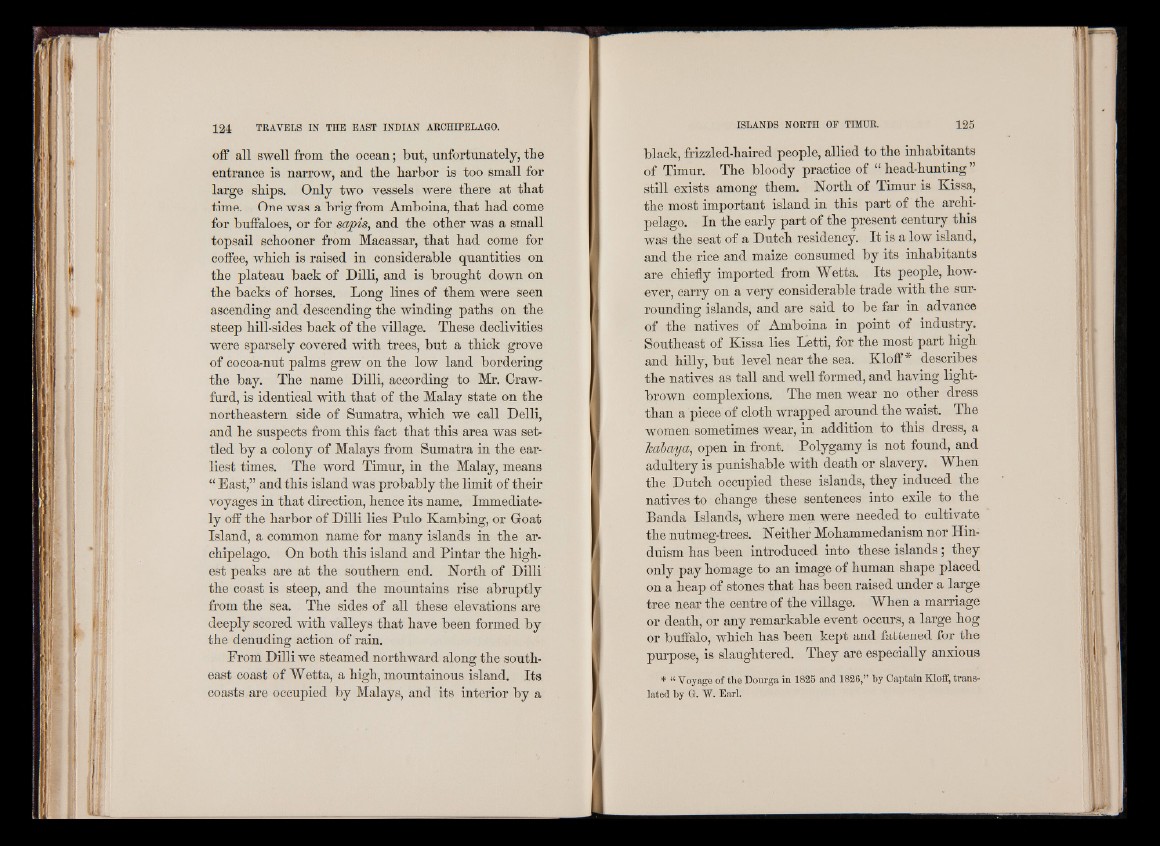
off all swell from tlie ocean; but, unfortunately, tie
entrance is narrow, and tbe barbor is too small for
large ships. Only two vessels were there at that
time. One was a brig from Amboina, that had come
for buffaloes, or for sapis, and the other was a small
topsail schooner from Macassar, that had come for
coffee, which is raised in considerable quantities on
the plateau back of Dilli, and is brought down on
the backs of horses. Long lines of them were seen
ascending and descending the winding paths on the
steep hill-sides back of the village. These declivities
were sparsely covered with trees, but a thick grove
of cocoa-nut palms grew on the low land bordering
the bay. The name Dilli, according to Mr. Craw-
furd, is identical with that of the Malay state on the
northeastern side of Sumatra, which we call Delli,
and he suspects from this fact that this area was settled
by a colony of Malays from Sumatra in the earliest
times. The word Timur, in the Malay, means
“ East,” and this island was probably the limit of their
voyages in that direction, hence its name. Immediately
off the harbor of Dilli lies Pulo Kambing, or Goat
Island, a common name for many islands in the archipelago.
On both this island and Pintar the highest
peaks are at the southern end. North of Dilli
the coast is steep, and the mountains rise abruptly
from the sea. The sides of all these elevations are
deeply scored with valleys that have been formed by
the denuding action of rain.
From Dilli we steamed northward along the southeast
coast of Wetta, a high, mountainous island. Its
coasts are occupied by Malays, and its interior by a
black, frizzled-haired people, allied to the inhabitants
of Timur. The bloody practice of “ head-hunting”
still exists among them. North of Timur is Kissa,
the most important island in this part of the archipelago.
In the early part of the present century this
was the seat of a Dutch residency. It is a low island,
and the rice and maize consumed by its inhabitants
are chiefly imported from Wetta. Its people, however,
carry on a very considerable trade with the surrounding
islands, and are said to be far in advance
of the natives of Amboina in point of industry.
Southeast of Kissa lies Letti, for the most part high
and hilly, but level near the sea. Kloff * describes
the natives as tall and well formed, and having light-
brown complexions. The men wear no other dress
than a piece of cloth wrapped around the waist. The
women sometimes wear, in addition to this dress, a
kabaya, open in front. Polygamy is not found, and
adultery is punishable with death or slavery. When
the Dutch occupied these islands, they induced the
natives to change these sentences into exile to the
Banda Islands, where men were needed to cultivate
the nutmeg-trees. Neither Mohammedanism nor Hinduism
has been introduced into these islands; they
only pay homage to an image of human shape placed
on a heap of stones that has been raised under a large
tree near the centre of the village. When a marriage
or death, or any remarkable event occurs, a large hog
or buffalo, which has been kept and fattened for the
purpose, is slaughtered. They are especially anxious
* “ Voyage of the Dourga in 1825 and 1826,” by Captain Kloff, translated
by Gr. W. Earl.